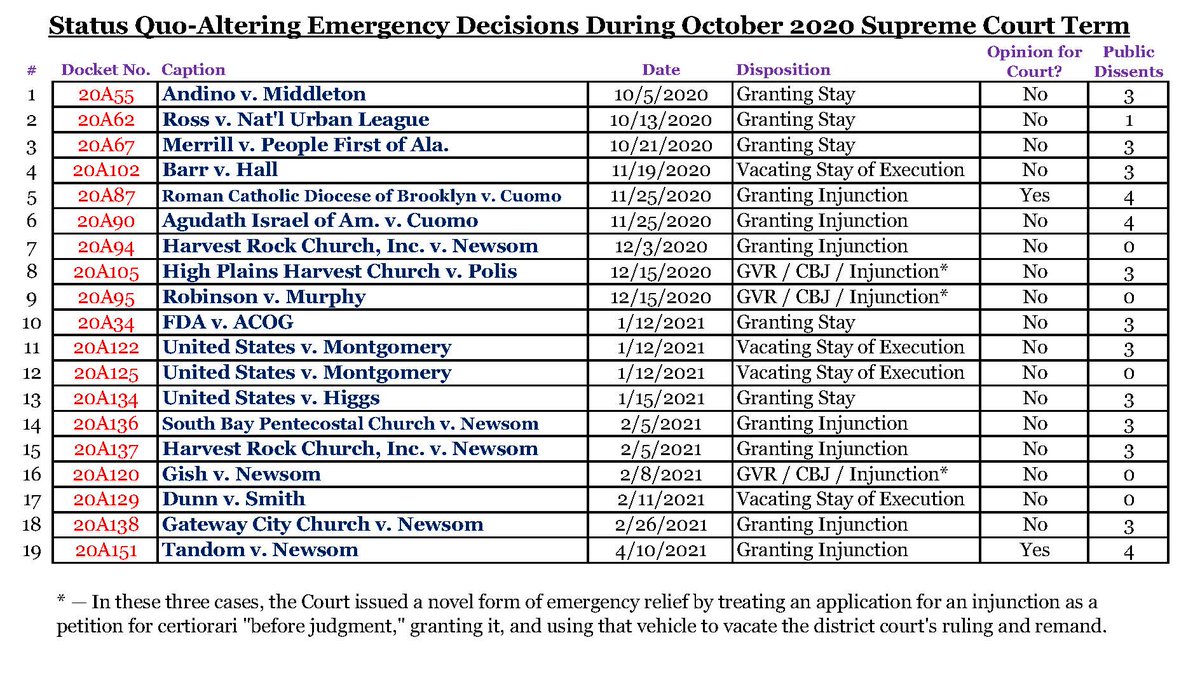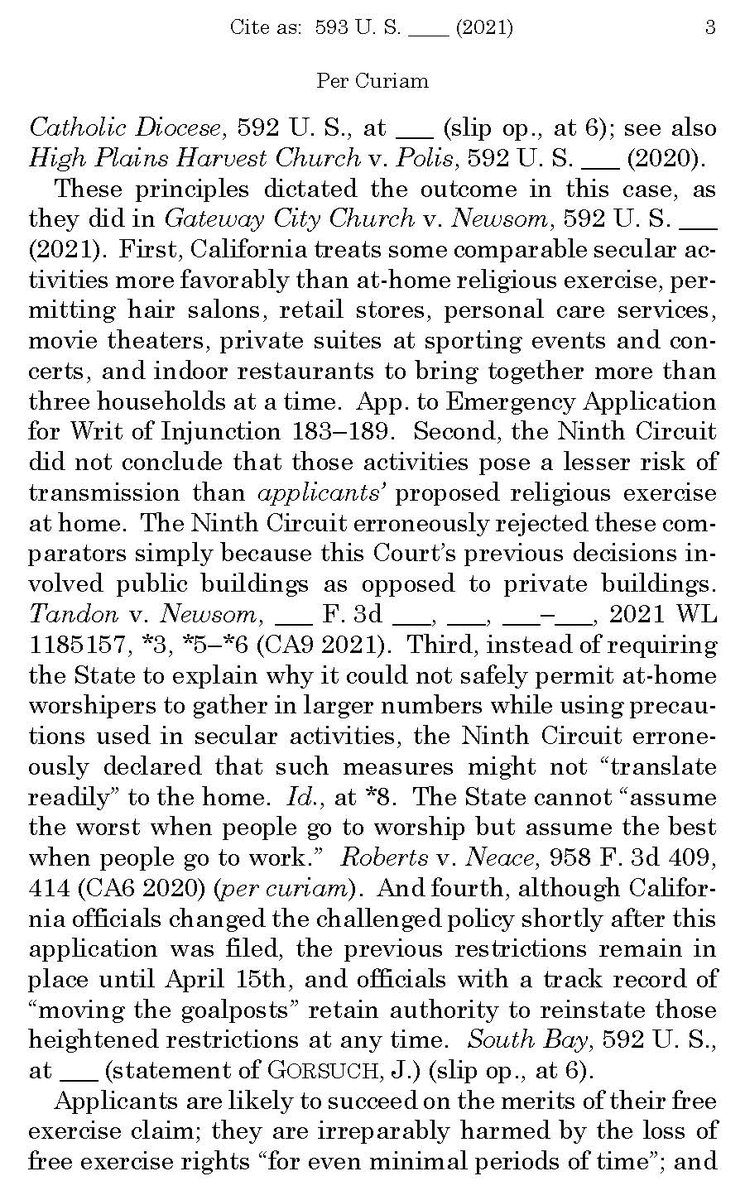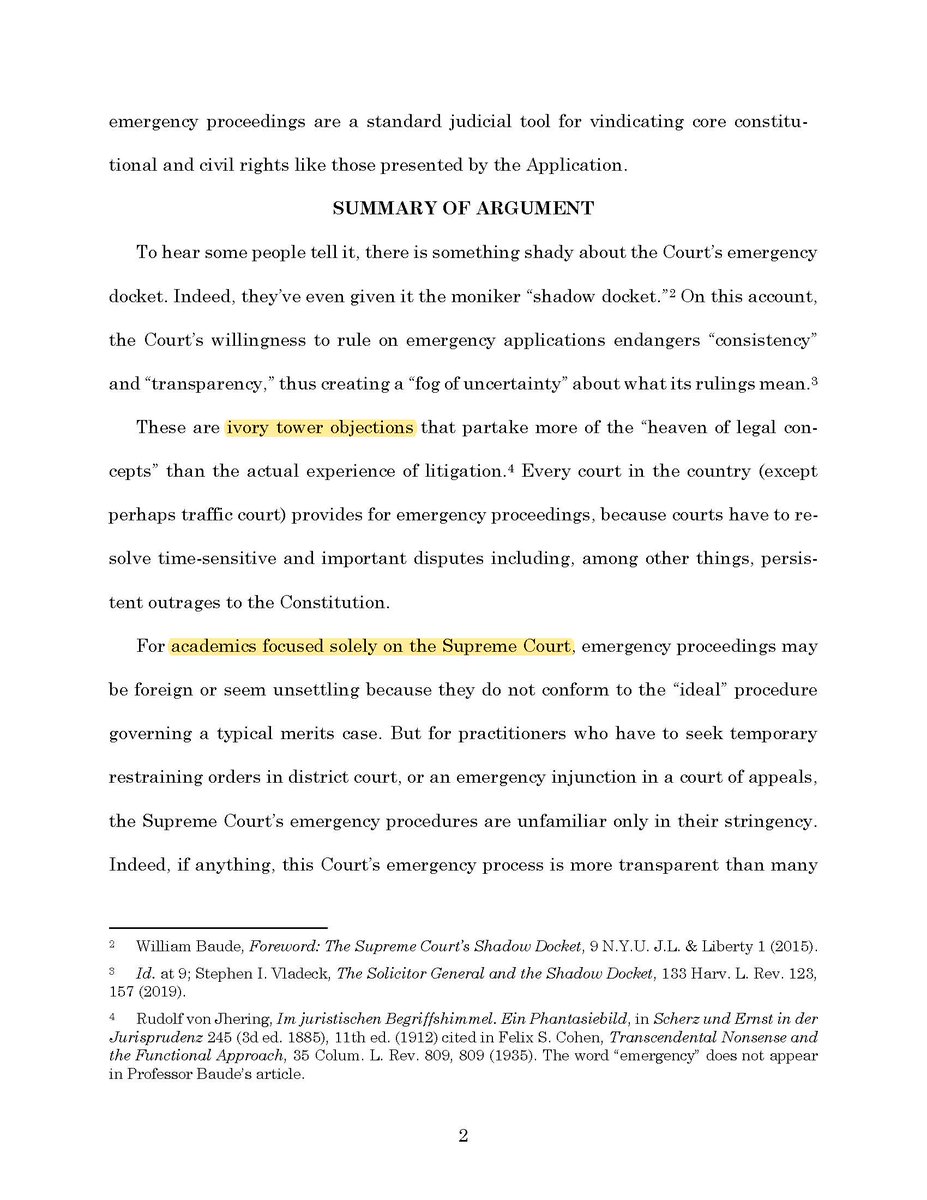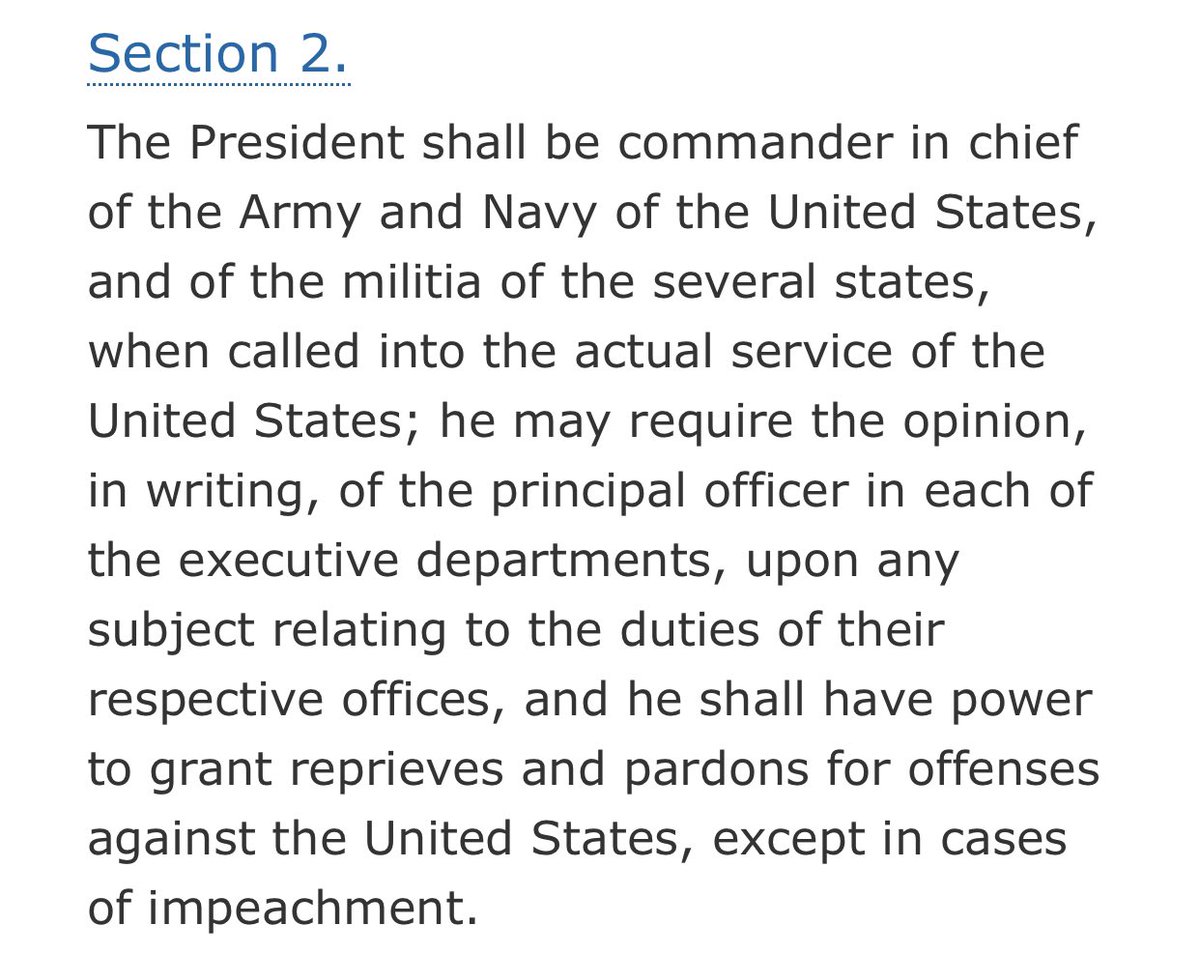
Yesterday, I posted a thread about how Friday's 5-4 #SCOTUS ruling enjoining CA's #COVID restrictions on in-home gatherings is the latest in a major uptick in status quo-altering rulings on the Court's "shadow docket."
Turns out, there's even more to this story.
Here's Part II:
Turns out, there's even more to this story.
Here's Part II:
https://twitter.com/steve_vladeck/status/1380838699605311491
The specific relief that the Court granted Friday night is an "injunction pending appeal," which bars the enjoined officers from carrying out the blocked policies until and unless the case is conclusively resolved (in favor of the blocked policy) on the merits. Here's the order: 
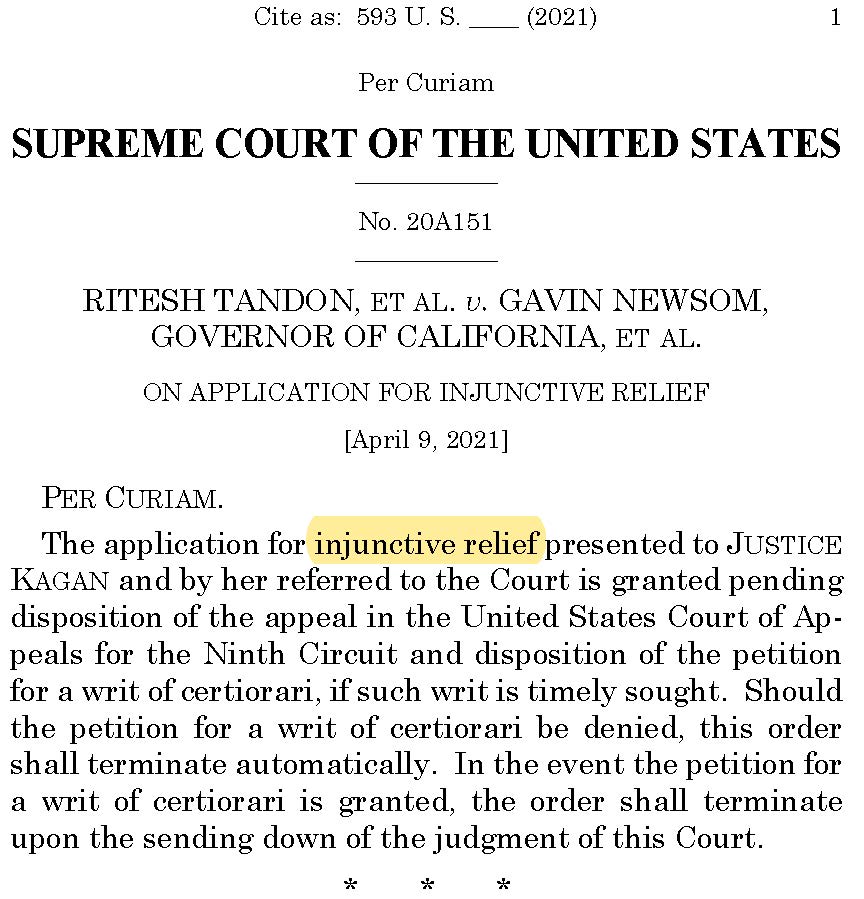
Such an injunction, which operates directly against government officers and is only available when at least two lower courts have already refused to provide such relief, is *supposed* to be exceedingly rare.
Here's Justice Scalia on the comparison with a stay pending appeal:
Here's Justice Scalia on the comparison with a stay pending appeal:

(In the old days, most of these applications were resolved by individual Justices acting "in chambers" as the Circuit Justice. But the same considerations apply when the full Court is acting, as noted in this 2010 order:) 
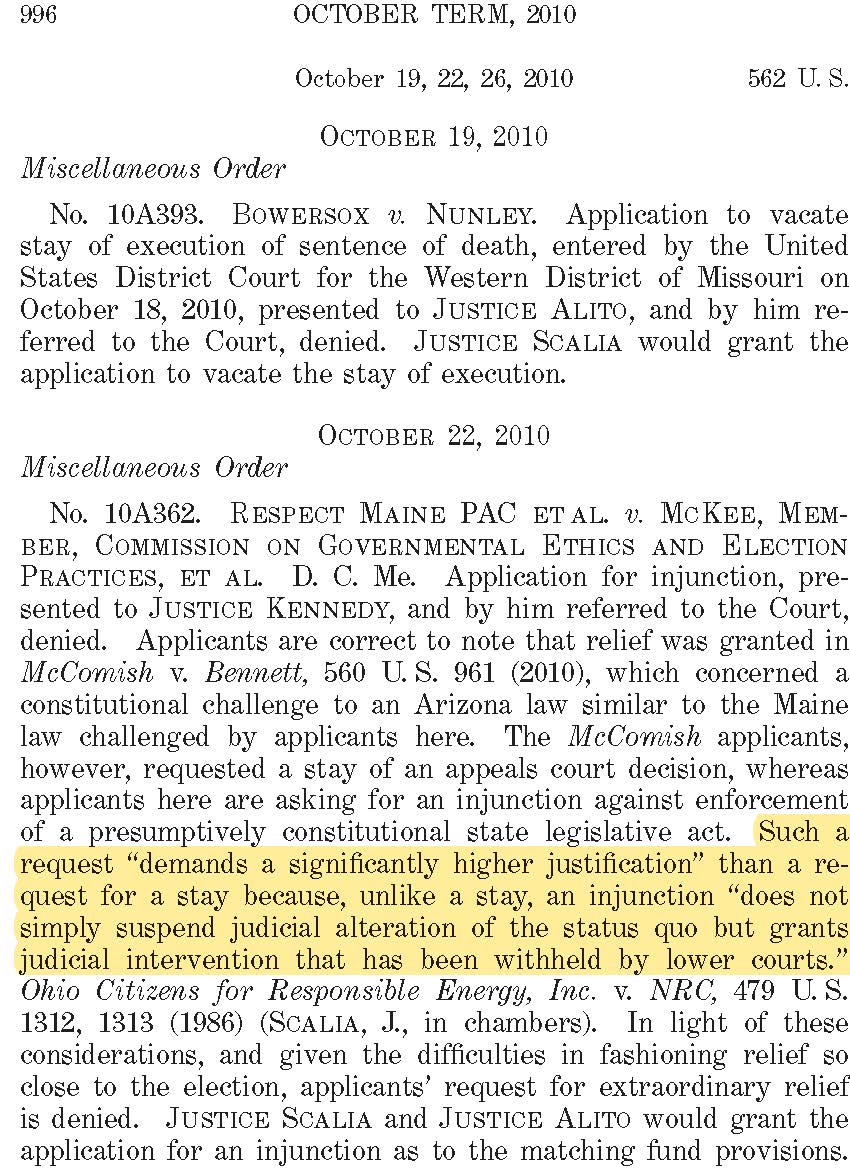
For as rare as this relief is *supposed* to be, Friday's ruling is at least the *seventh* time this Term (since 10/5/20) that the Court has issued such an injunction. To put that in context, the last time before this Term that the Court issued *an* injunction was December *2015.* 


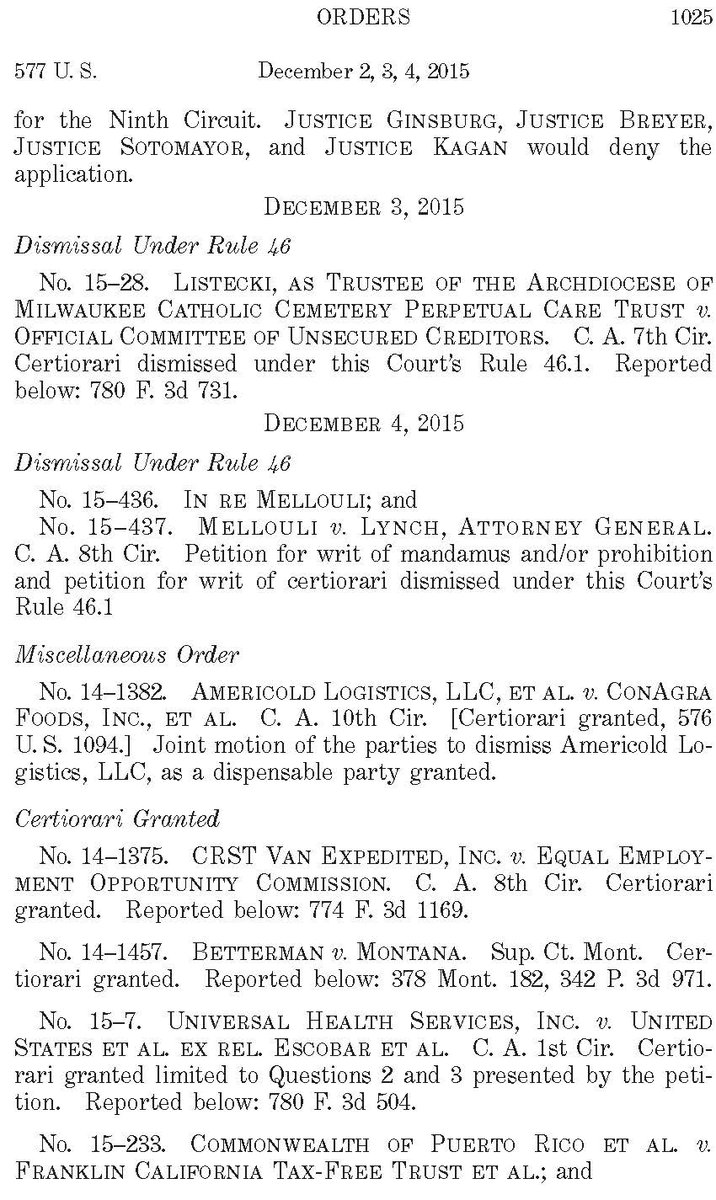
All 7 have been in religious liberty challenges to state #COVID regulations (from NY and CA). All 7 have come after multiple lower courts (with judges appointed by Presidents of both parties) denied such relief.
But what's especially remarkable isn't the total; it's the impact.
But what's especially remarkable isn't the total; it's the impact.
Friday's ruling, as has been documented elsewhere, makes important *new* First Amendment law. But emergency injunctions are only supposed to issue to protect rights that were already "indisputably clear."
Simply put, they're not supposed to be a vehicle for *changing* doctrine.
Simply put, they're not supposed to be a vehicle for *changing* doctrine.
This is why the "shadow docket" is a problem: It's not just that it's busier than ever before; it's not just that more of these rulings are changing the status quo *during* litigation; it's that the Justices are using these emergency orders to change doctrine across *all* cases.
To those who are more interested in (and desirous of) the new law that the current Court is making than they are in fidelity to the Court's procedural rules and norms, this won't matter.
One need look no further than the Becket Fund's amicus brief in Tandom for evidence of that.
One need look no further than the Becket Fund's amicus brief in Tandom for evidence of that.
But there are lots of good reasons *why* the Court has historically disfavored such relief—and has especially disfavored using such relief to change the law—even when the Justices were sympathetic on the merits.
Public perception matters here, and the visual is increasingly bad.
Public perception matters here, and the visual is increasingly bad.
Ultimately, one of two things is true: Either Friday's ruling (and maybe others from this Term) is a misapplication of the Court's rigid standard for emergency injunctions, or that standard has changed—with no public acknowledgement. Neither answer is especially comforting.
/end
/end
• • •
Missing some Tweet in this thread? You can try to
force a refresh

